Why Product Research Matters
Before you build, buy, or import any product, it’s essential to ask one critical question: will it sell?
This is where product research becomes your most valuable tool.
Product research is the systematic process of evaluating whether a product idea has enough market demand, is profitable, and meets the needs of a specific target audience.
Whether you’re planning to sell physical products on Shopify or launch a digital service through your own website, thorough product research helps reduce risk and increase your chances of success.
1. Helps You Validate Demand Before Launch
One of the most common reasons new products fail is that they’re built based on assumptions rather than data. Through methods like keyword research, Google Trends analysis, and competitor benchmarking, you can determine if people are actively looking for solutions related to your idea. This allows you to validate product demand and avoid wasting time on products no one is searching for.
For example, searching a product idea on Google Keyword Planner might show that your keyword has only 10 monthly searches. That’s a red flag. On the other hand, 10,000+ monthly searches and low keyword difficulty could signal a profitable opportunity.
2. Prevents Costly Inventory Mistakes (Especially for Physical Products)
For eCommerce sellers dealing with physical goods, product research is the difference between sitting on unsold inventory and achieving sell-out success. If you bulk import products without understanding your market first, you risk holding dead stock, tying up your capital, and facing high storage fees. By analyzing sales data, customer pain points, and seasonal trends, you’ll make inventory decisions based on real market demand, not gut instinct.
3. Reveals Competitive Insights You Can Use to Win
Market research for a product idea isn’t just about validating if it will sell, it’s about understanding how to position it. By studying your competitors’ pricing, marketing strategies, and customer reviews, you gain insight into what’s working and where gaps exist. This can help you develop a unique selling proposition (USP) that makes your product stand out in a crowded market.
For example, you might discover that existing digital planners on Etsy all lack integration with popular apps like Notion or Google Calendar. That’s your opportunity to fill the gap with a better, more functional version.
4. Supports Better Pricing and Profitability Decisions
Product research tools like Jungle Scout, Helium 10, and SaleHoo often provide estimated profit margins, seller fees, and net revenue. This data allows you to set prices that not only remain competitive but also keep your business profitable. Without understanding production costs, market price range, and customer price sensitivity, you might underprice (and lose profits) or overprice (and lose sales).
In essence, the product research process ensures you’re not just building a product, you’re building a viable business.
5. Builds the Foundation for Long-Term Product-Market Fit
Successful products solve specific problems for a clearly defined audience. Product research helps you pinpoint both who your customers are and what they care about most. Whether you’re launching a fitness app, an eco-friendly home product, or a custom t-shirt line, understanding your market early helps you shape product features, messaging, and even brand tone in alignment with your customers’ needs. This increases your chances of long-term traction and customer loyalty.
Best Tools for Product Research
These tools are widely used for product research, trend discovery and competitor analysis in dropshipping and eCommerce. Each platform offers unique features like real time sales data, curated product lists, ad creative insights and store analytics, helping sellers find profitable products and validate demand before launching. Below is a detailed explanation of each tool and its main use cases.
Sell The Trend
Sell The Trend is an AI powered product research and dropshipping platform that combines multiple tools into one system. It provides access to millions of products from AliExpress, Amazon, CJDropshipping and Shopify stores, along with detailed analytics on sales trends, order growth and supplier data. It also includes a store builder, one click product import to Shopify, Facebook ad explorer, influencer database, and order automation features. The platform is designed for both beginners and established sellers who want to streamline product discovery, competitor analysis and store management in one place.

Use cases
Niche Scraper
Niche Scraper is a product research tool that scrapes top selling items from AliExpress and Shopify stores and offers daily handpicked product recommendations. It provides data on order volume, pricing, and competitor performance, and includes an auto video generator for creating product marketing videos. Its simple interface and affordable pricing make it accessible for new dropshippers who want quick insights into profitable products.
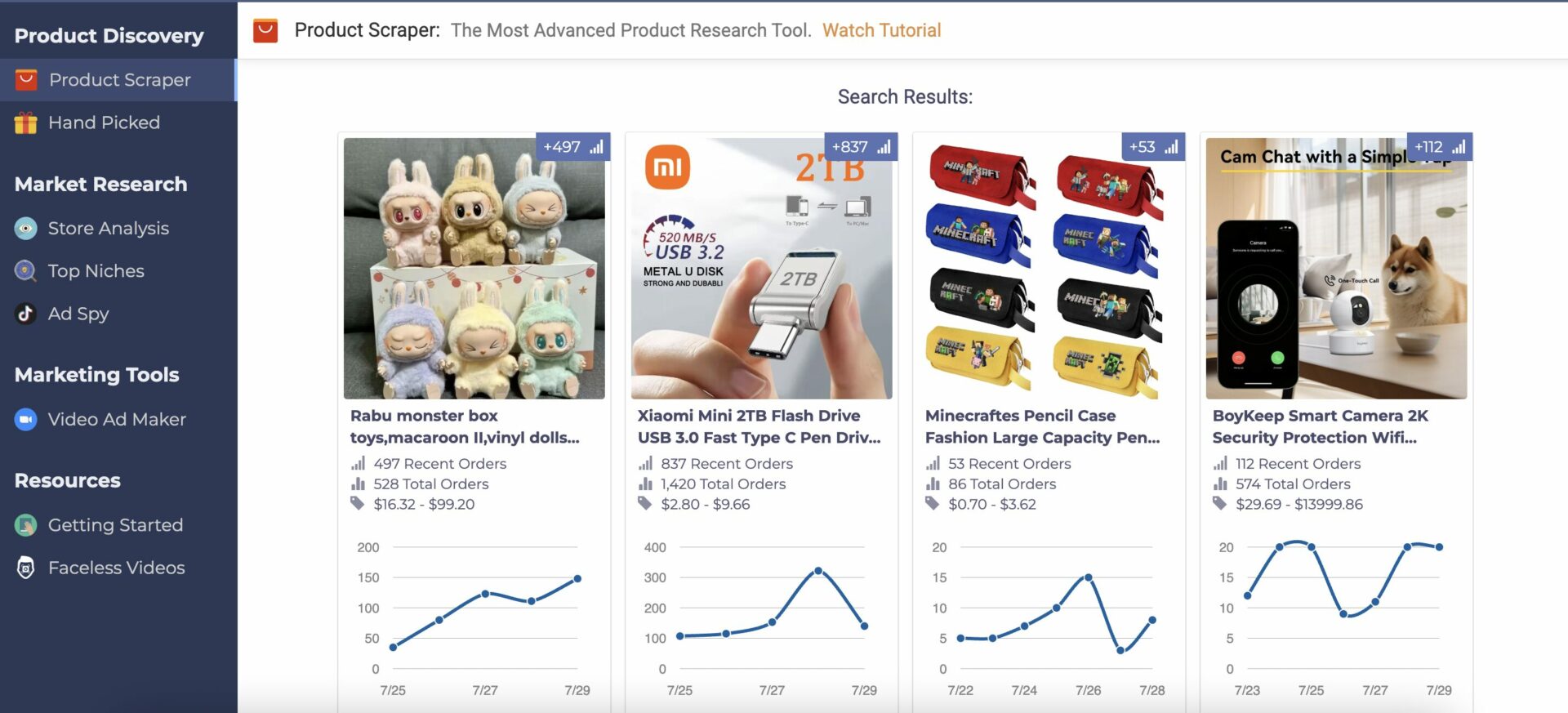
Use cases
Ecomhunt
Ecomhunt is a curated product discovery platform that lists viral products along with essential metrics like profit margins, pricing suggestions, engagement levels and ready made ad creatives. It also provides targeting ideas, analytics and tutorials to help sellers quickly test new products. The platform is focused on saving time by offering human vetted product picks that are already trending.

Use cases
AliShark
AliShark is a real time analytics tool for AliExpress products that tracks orders, pricing, suppliers and shipping options. It refreshes its data frequently, allowing sellers to spot rising trends early and compare suppliers before listing products. The platform is lightweight and cost effective, making it suitable for budget conscious sellers focused on AliExpress.
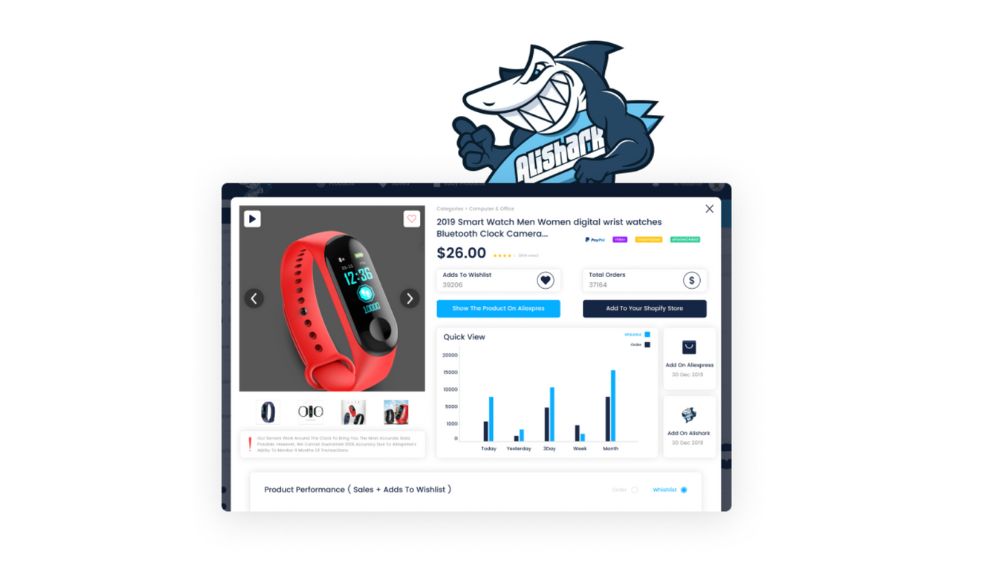
Use cases
Dropship Spy
Dropship Spy is a community driven product research platform that offers tested products, ad creatives, engagement statistics, Facebook audience targeting ideas and supplier links. It emphasizes real life proven products that have been tested with ads, helping sellers make more confident product choices. The platform is especially useful for those running Facebook ad campaigns.
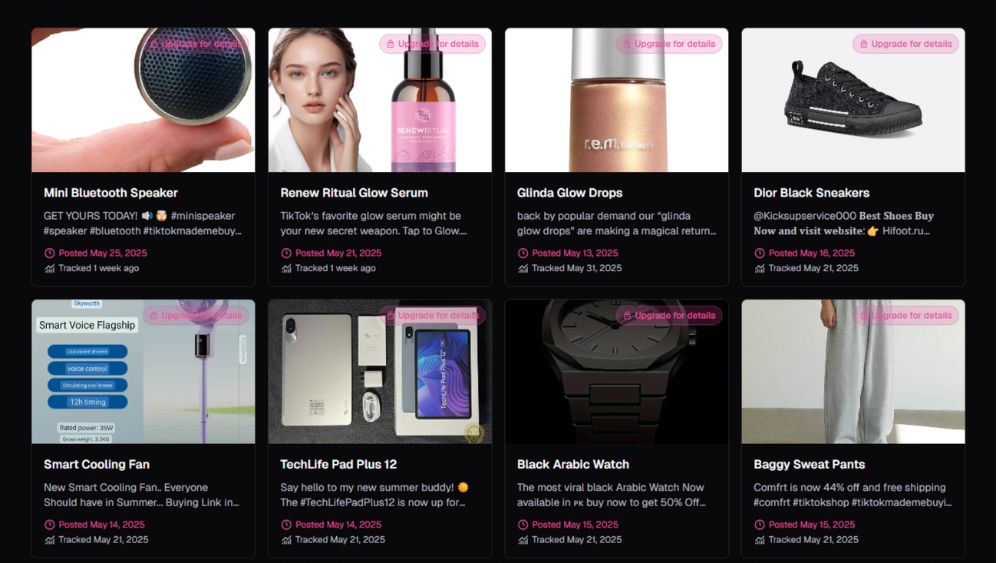
Use cases
Pexda
Pexda provides a daily updated list of tested and trending dropshipping products along with ad copy examples, engagement metrics and targeting suggestions. It allows filtering by niche, category or Facebook ad performance to find products that match a seller’s audience. Pexda is known for quickly surfacing viral products along with data to replicate their marketing.
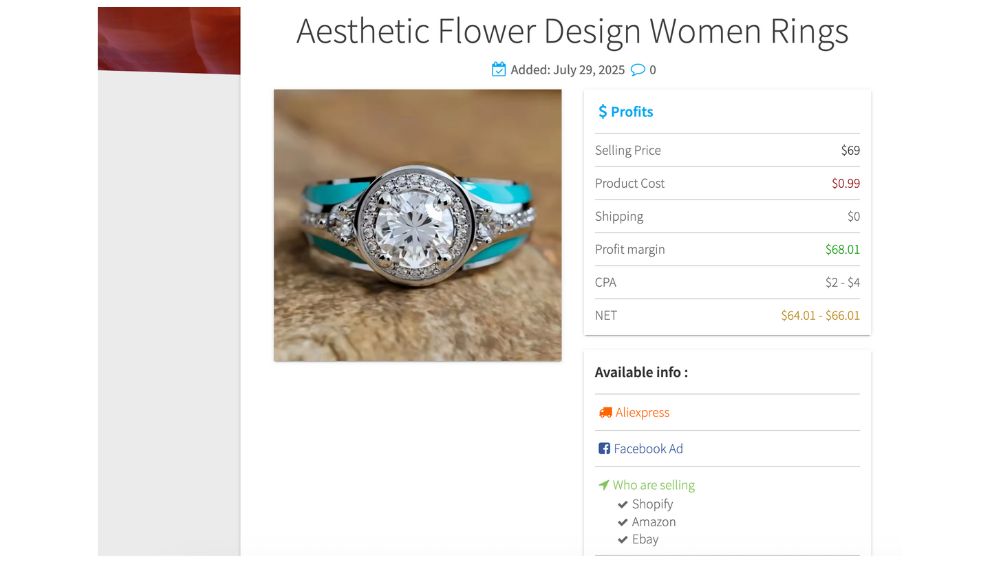
Use cases
- Ad copy suggestions
- Filter products by niche
- Track Facebook ad trends
- Find untapped winning items
Intelligynce
Intelligynce is a research suite that allows users to analyze over half a million Shopify stores and millions of products. It provides insights on store traffic, apps, themes, pricing and product launches. Users can filter stores by niche, keywords or apps used, making it a strong competitive intelligence tool for those planning new stores or looking for inspiration.

Use cases
Thieve.co
Thieve.co is a visually curated list of AliExpress products handpicked by designers and creative professionals. It focuses on aesthetic and trendy items in categories like fashion, home decor and accessories. The platform emphasizes quality and style, making it ideal for brands targeting design conscious audiences.

Use cases
Jungle Scout
Jungle Scout is an Amazon specific product research and analytics tool that helps sellers identify high demand and low competition products. It provides sales estimates, historical trends, keyword data and competitor tracking features. It is widely used by Amazon sellers who want to validate product ideas before launching.
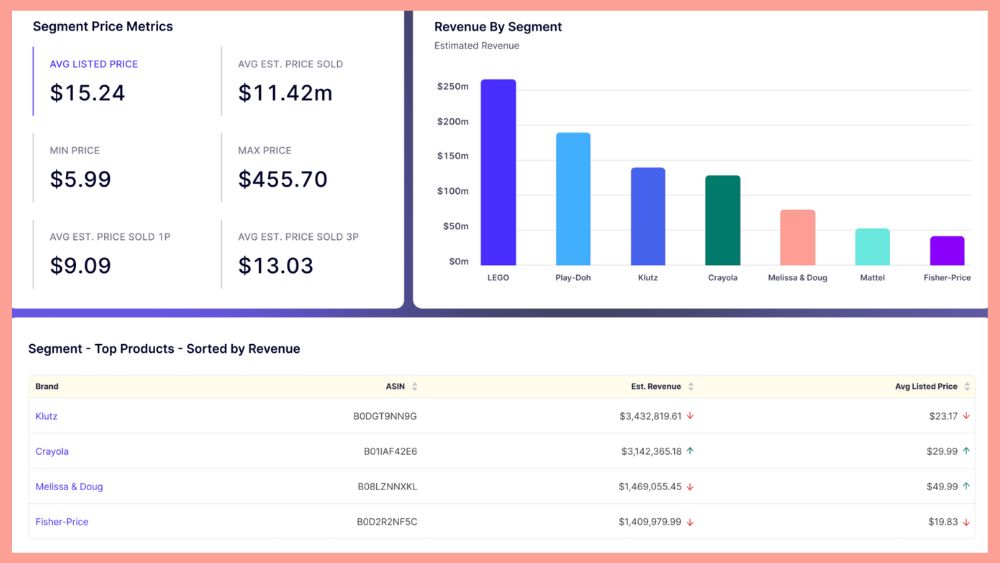
Use cases
Helium 10
Helium 10 is a comprehensive suite of Amazon tools for product research, keyword tracking, listing optimization and PPC campaign management. It allows users to monitor competitor keywords, discover profitable opportunities and launch optimized listings. The platform is designed for serious Amazon sellers scaling their businesses.
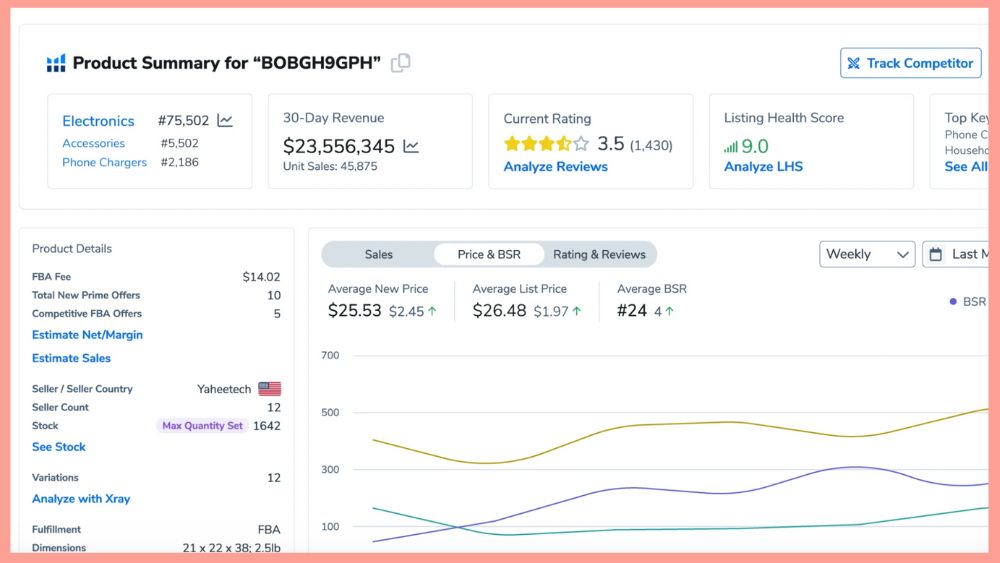
Use cases
BuzzSumo
BuzzSumo is a content research and influencer analysis tool that helps users identify viral topics and products based on social media shares and online engagement. It is more focused on content trends rather than sales data and is useful for brands that rely on influencer marketing and content driven demand.

Use cases
Google Trends
Google Trends is a free tool that tracks search interest for specific terms across time and regions. It is often used to validate seasonal demand, compare keywords and identify breakout topics. It does not provide supplier or pricing data but is valuable for early stage market validation.
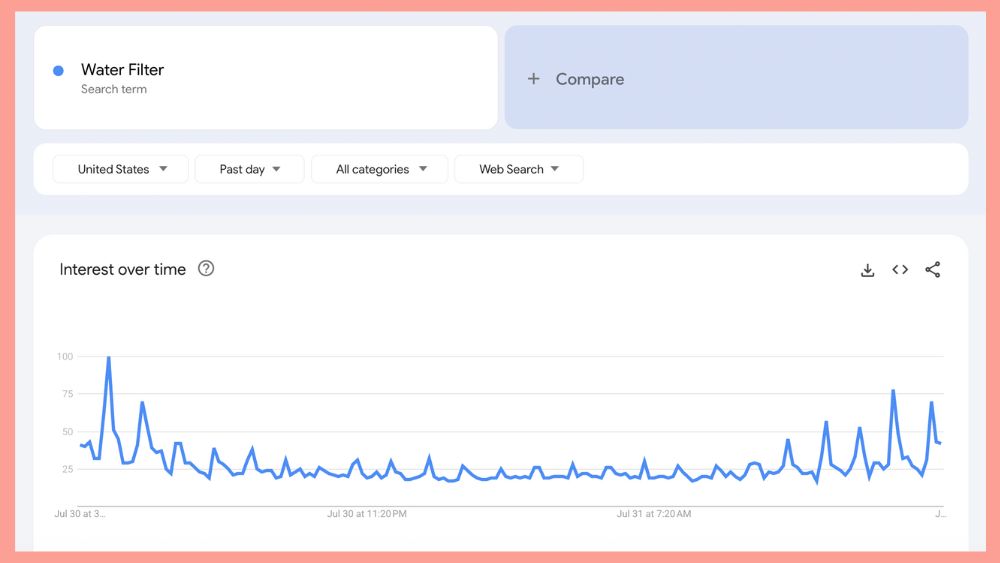
Use cases
- Validate product demand over time
- Compare seasonal trends
- Find regional interest spikes
- Discover breakout search topics
TrendHunter
TrendHunter tracks emerging trends and cultural movements across multiple industries. It offers insights into future product categories, branding opportunities and creative ideas. The platform is geared toward entrepreneurs who want to align with upcoming cultural shifts.
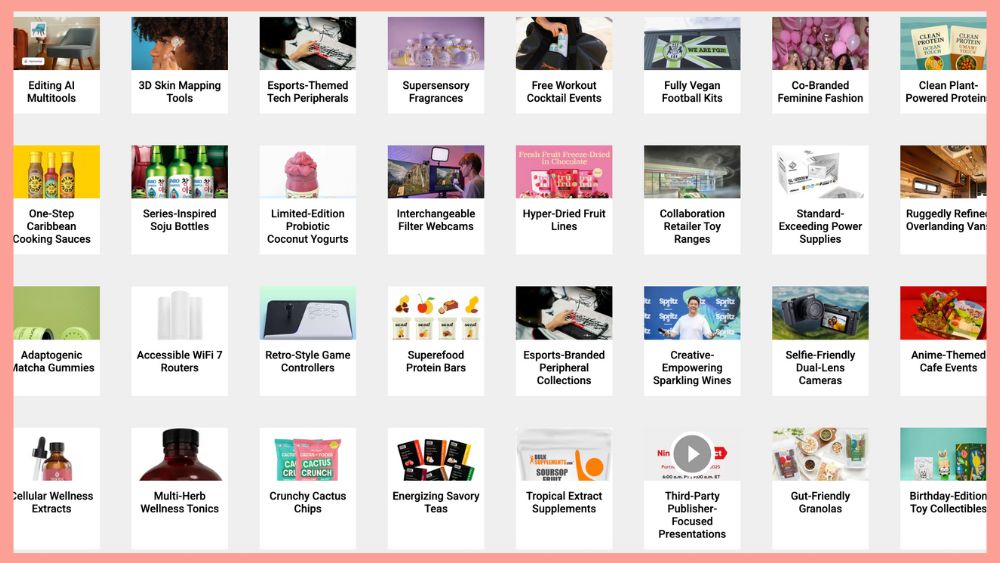
Use cases
WatchCount
WatchCount is an eBay based tool that shows real time popularity of items by tracking how many people are watching a listing. It helps sellers validate product demand and analyze competitors without needing a paid research tool.
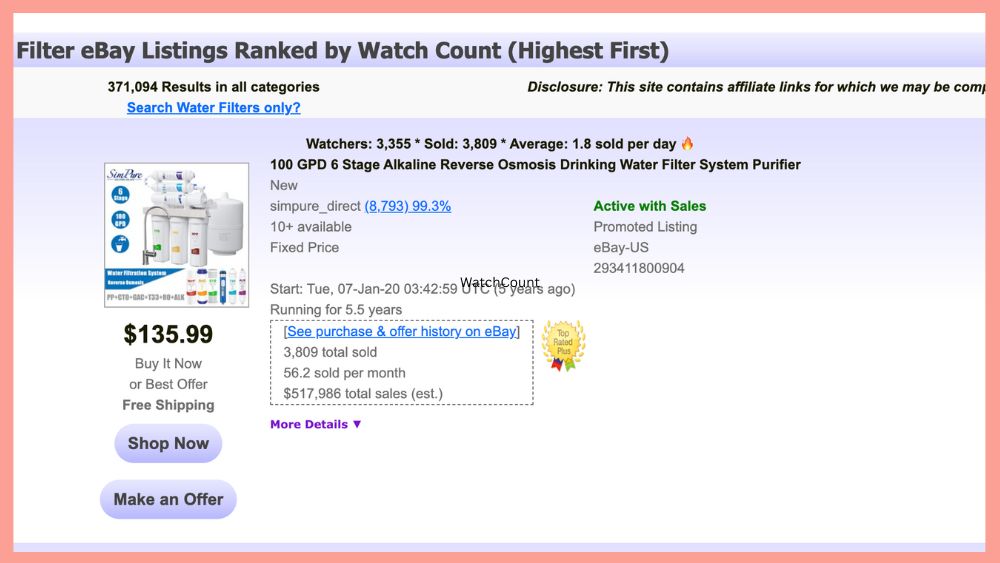
Use cases
Commerce Inspector
Commerce Inspector is a Chrome extension that reveals competitor Shopify store data such as best selling products, themes, apps, pricing and launch timelines. It is a quick and visual way to analyze competitors and discover new opportunities.
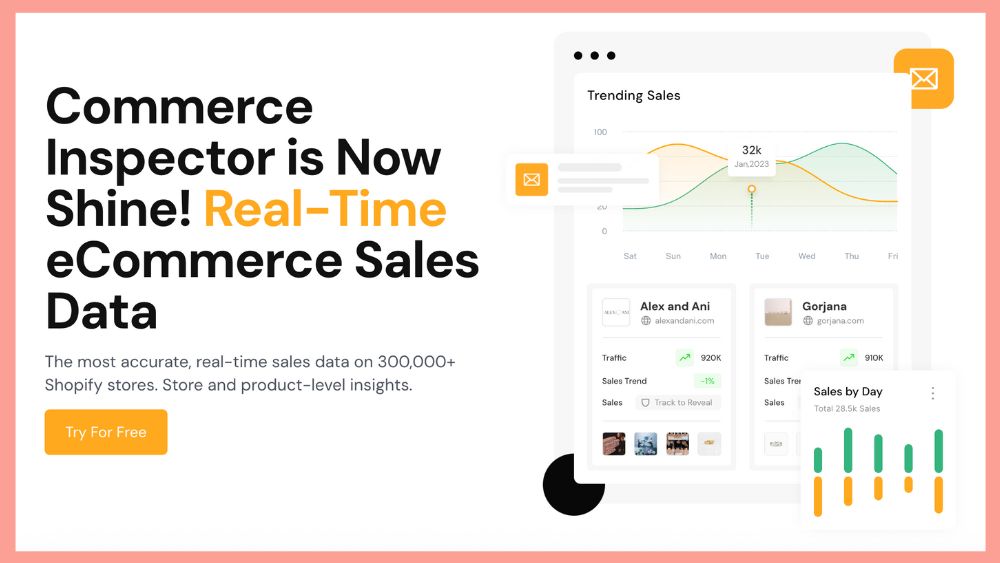
Use cases
Step 1: Spot an Initial Idea or Pain Point (Your Goldmine Starts Here)
Before you even look at tools or data, the smartest entrepreneurs start with people, their frustrations, desires, routines, and blind spots. Your next product idea is likely hiding in a conversation, a complaint, or a workaround someone casually mentions online.
Where to Look (Start With Unfiltered Conversations)
These are real-time, unpolished sources where people share exactly what they want, often without realizing it.
- Reddit – Subreddits like r/BuyItForLife, r/Entrepreneur, r/Frugal, r/Mommit, or niche hobby subs reveal what users love or struggle with. Search “need,” “recommend,” “hate,” “problem,” “can’t find.”
- Amazon & Etsy Reviews – Don’t just look at 5-star reviews. Focus on:
- 1–3 star reviews = what customers expected but didn’t get.
- 4-star reviews = satisfied but room for improvement.
- 1–3 star reviews = what customers expected but didn’t get.
- Facebook Groups – Niche community groups (e.g., new moms, remote workers, pet owners) often surface product requests organically. Keywords to watch: “Does anyone know a product that…?” or “Wish there was something to help with…”
- TikTok Comments & Videos – TikTok isn’t just for trends. Creators often highlight clever hacks or missing tools. Comments sections are goldmines for finding what “everyone wants but can’t find.” Check for:
- “I need this in my life”
- “Where do I buy this?”
- “Why doesn’t this exist yet?”
- “I need this in my life”
- Google Autocomplete & People Also Ask – Start typing a product or problem in Google. See what the algorithm suggests others are searching. This reveals patterns of curiosity and unmet needs.
What to Ask While Browsing
As you consume content, train your brain to filter for problems worth solving:
- What do people repeatedly complain about?
- What’s being done manually that could be automated?
- Are customers forced to combine multiple products to solve one problem?
- Are there passionate communities underserved by current products?
- Is there something that exists but is overpriced, outdated, or poorly designed?
Real-Life Examples
- Digital Product: In a Reddit thread on ADHD productivity, multiple users complain about traditional task apps being overwhelming. A Chrome extension that simplifies to-do lists specifically for ADHD brains could be a hit.
- Physical Product: In a Facebook group for plant lovers, users often complain: “I forget to water my plants, and they die.” → Self-watering, aesthetic indoor planters = validated product idea.
- Service-Based/Digital Hybrid: A TikTok creator goes viral showing how they track their child’s nap schedule on paper. Comments flood in asking, “Is there an app for this?” — That’s your cue.
Your Goal in This Step
Don’t look for products. Look for problems people talk about without filters. Where there’s friction, there’s opportunity.
Once you’ve got 5–10 problem statements or idea nuggets, you’re ready to move on to Step 2: checking if other people are searching for or buying the solution.
2. Use Google Trends to Check Interest Over Time
After spotting a product idea or customer pain point, your next move is to verify whether that idea has consistent or growing public interest. Google Trends is one of the fastest and most underrated free tools to get a real-world pulse on how many people are actually thinking about or searching for a product like yours.
Google Trends shows you how a search term performs over time. You can look at interest by region, compare two or more ideas, and see whether something is rising, seasonal, declining, or already saturated. You don’t need to be a data analyst. You just need to know what patterns to look for.
Where to go: trends.google.com
What to search: product keywords, problems, use cases, or even brand names
Examples:
The results are shown as a line graph from 0 to 100. It doesn’t show exact search volume, but the trend direction is what matters.
What you’re looking for:
Break down the trend by:
Real example:
Let’s say you noticed several people talking about “portable blender” on TikTok. Go to Google Trends and type in “portable blender”. The 12-month trend shows a spike during summer. Zoom out to 5 years, and you notice it’s been peaking every year between May and July. That tells you the product has seasonal repeatability, not just a one-time fad.
Now try comparing: “portable blender” vs “USB juicer” vs “mini smoothie maker”. This helps find which term customers prefer and what to use in product titles and ads.
Pro tip: Use breakout trends to identify rising micro-niches. If a term is marked as “breakout,” it means searches have increased by more than 5000% recently.
Pair this with:
Goal in this step is simple: make sure people care before you invest. If interest is rising or stable, you move forward. If not, you refine the idea, reposition, or pivot to something more aligned with current demand.
Once you’ve spotted promising search interest, the next step is to validate that people aren’t just curious but also ready to buy. That’s where keyword and marketplace data comes in.
3. Validate Demand Using Keywords and Marketplaces
You’ve spotted an idea and checked that interest exists. But are people just curious, or are they actually spending money on it? That’s where keyword tools and online marketplaces come into play. This step helps you gauge whether your idea has real buying intent and competition worth tackling.
Where to go: Amazon, Etsy, Google Keyword Planner, Ubersuggest, Ahrefs, SEMrush, TikTok Search, YouTube Search
What to search: the same terms from your Google Trends research—product name, problem, or related use cases
What to look for:
- High number of reviews on Amazon = proven sales volume
- “Frequently bought together” and “Customers also bought” = complementary product ideas
- Recurring complaints in 3-4 star reviews = opportunities to improve or differentiate
- Etsy listings with thousands of sales = high-volume niche with clear handmade/custom demand
- Google Keyword Planner monthly searches + CPC (cost per click) = proof of buying intent
- TikTok or YouTube views = viral potential
Example:
You’re still interested in the portable blender idea. On Amazon, you find the top sellers with 5,000+ reviews and lots of UGC (user-generated content) images in the reviews. Common complaints include “battery dies quickly” or “blades not strong enough for ice.” That tells you there’s space to build a better version or position it more honestly.
On Etsy, you notice personalized blender bottles for kids gaining traction. That’s a signal that the niche can branch into gifts or back-to-school campaigns.
Now use Google Keyword Planner to check terms like:
If advertisers are bidding money (CPC > $1), that means there’s buying intent behind the search. It’s not just people researching; they’re clicking with credit cards in hand.
Pro tip: Use Ubersuggest or Ahrefs to see keyword trends over time and get keyword difficulty. If a term has decent volume, moderate difficulty, and rising trend—perfect storm.
Extra angle: Read the “People Also Ask” and “Related Searches” on Google SERP. These uncover additional keywords, sub-niches, and user pain points.
You’re not just looking for volume here. You’re validating that people are already buying, there’s room to improve or niche down, and the competition is clear but beatable. If your product idea passes this filter, you’re getting very close to MVP-ready territory.
Next up, you’ll want to find out what kind of content or messaging actually gets people to click, engage, or buy by looking at what’s already performing well in your niche.
5. Explore Social Media and Trend Platforms for Real-Time Insights
To complement your data-driven research, tap into social media and trend platforms where consumers express genuine enthusiasm, frustrations, and unmet needs. These platforms reveal not only what products are popular now but also what could become the next big thing.
Where to check: TikTok Creative Center, Pinterest Trends, Instagram Explore, Twitter hashtags, Facebook Groups, Reddit communities
What to look for:
Example:
If you are researching a planner for busy parents, TikTok might show videos of influencers reviewing different planner styles. Comments might reveal that users want more digital integration or simplified layouts. Pinterest might highlight trending planner designs or popular organizational hacks, giving clues on style and features your product should have.
By following social buzz, you can also identify seasonal trends or micro-niches before they hit mainstream platforms like Amazon or Google Search.
Using these insights helps you craft marketing messages that resonate and adapt your product features to what customers genuinely desire. It also prepares you to ride social waves early, which is crucial for fast growth in competitive eCommerce markets.
After leveraging social platforms, the next step is to gather direct customer feedback through surveys or interviews to validate your assumptions and refine your product concept.
6. Run a Feasibility and Profitability Assessment
Before investing heavily in production or development, it’s important to ensure your product idea can generate a sustainable profit. This step involves estimating all costs, setting realistic pricing, and understanding the financial viability of your business model.
Where to focus: Cost of goods sold (COGS), shipping, packaging, platform fees, marketing expenses, taxes, and other overheads
What to calculate:
Example:
If you source a portable blender for $15, shipping costs $5, Amazon fees take $10, and your average ad spend is $8 per sale, your total cost is $38. If your selling price is $50, your gross margin is $12, but your net profit after ads is only $4 per unit. This might be too low to scale profitably.
Pro tip: Aim for a minimum 30-40% gross margin before marketing costs to leave room for ads and unexpected expenses. Test different pricing scenarios and consider premium or bundle offers that increase average order value.
Also consider production lead times and minimum order quantities to avoid cash flow issues or overstock. If your product requires custom manufacturing, factor in development and tooling costs.
This assessment helps avoid launching products that look good on paper but fail to deliver sustainable returns. Once you confirm profitability, you’re ready to create prototypes or minimum viable products (MVP) to test market interest before full launch.
7. Build a Landing Page or Prelaunch Campaign to Test Interest
Once you’ve validated demand and profitability, the next step is to gauge real customer interest before investing heavily in inventory or full product development. Creating a simple landing page or prelaunch funnel lets you collect potential buyers’ contact information and measure their enthusiasm.
Where to set up: Platforms like Carrd, Unbounce, Leadpages, Shopify (coming soon page), or WordPress with landing page builders
What to include on the page:
Example:
If you’re launching a planner app, your landing page might say “Simplify Your Busy Day with the Planner Built for ADHD Brains.” Include screenshots or concept videos and ask visitors to join a waiting list for early access.
Test your landing page with a small advertising budget (for example $50–$100) on Facebook Ads, Google Ads, or TikTok Ads targeting your defined audience. Monitor metrics like click-through rate (CTR), cost per click (CPC), and most importantly, cost per lead (CPL).
What you want to see:
If the test results are positive, you’ve validated that your product idea attracts real buyer interest, and you can move confidently to product development or inventory sourcing. If results are weak, you may need to refine your messaging, target audience, or even revisit your product idea.
This step is often the most cost-effective way to reduce risk before committing significant resources. It also builds a ready-made audience for your eventual launch.
Next, you’ll want to gather deeper customer insights through surveys or interviews to refine your product and marketing strategy further.
8. Gather Direct Customer Feedback Through Surveys and Interviews
After attracting interest with your landing page or prelaunch campaign, it’s essential to deepen your understanding of potential customers’ needs, preferences, and pain points. Direct feedback helps you refine your product features, messaging, and positioning before full development or launch.
Where to conduct: Email surveys, Google Forms, Typeform, one-on-one interviews, focus groups, social media polls
What to ask:
Example:
If your product is a digital planner, you might survey early signups asking how they currently manage schedules, what frustrates them about existing apps, and what new features they want. Interviews could uncover insights about how busy parents balance family and work that shape product design.
Collecting qualitative feedback helps you:
Use this information to tweak your product roadmap, create clearer messaging, and plan marketing campaigns that truly connect with your audience.
Once you have strong feedback, you can confidently proceed to final product development, testing prototypes, or placing initial inventory orders. This customer-driven approach reduces guesswork and increases your chances of success.
If you want, I can help you create survey templates or interview guides tailored to your product and audience.
9. Find Reliable Suppliers or Development Partners
With a validated product idea and clear customer insights, the next step is to source your product or develop it efficiently. Finding trustworthy suppliers or developers ensures quality, timely delivery, and manageable costs, critical for a smooth launch and sustained growth.
Where to search:
What to evaluate:
Example:
If you’re sourcing a portable blender, compare several manufacturers on Alibaba. Request samples to test quality and verify claims such as battery life and material safety. Check reviews or references of the supplier’s past clients. Negotiate terms that protect you from excessive inventory risk.
For digital products, interview multiple freelancers or agencies. Review their portfolios and ask about their development process, timelines, and post-launch support.
Securing the right partner minimizes surprises, improves customer satisfaction, and helps maintain healthy profit margins.
After this, you’ll be prepared to finalize your product design, place your first order, or begin software development and testing.
10. Make a Go/No-Go Decision and Plan Your Launch
After completing all the research, validation, and preparation steps, it’s time to decide whether to move forward with your product or revisit earlier stages. This decision should be based on clear criteria drawn from your data and feedback.
What to consider:
If the answer to these questions is yes, you’re set to launch. Develop a detailed marketing and sales plan including:
If the answer is no, analyze which areas need improvement or whether you should pivot your product concept.
Taking a disciplined approach to this decision helps you avoid costly mistakes and positions your product for a successful market entry.
Launching is just the beginning continuous learning and adaptation will keep your product competitive over time.
Conclusion
Successful product research isn’t about guesswork. It’s a step-by-step process that combines curiosity, data, validation, and real-world feedback. By identifying unmet needs, tracking trends, analyzing the competition, and testing demand before launch, you minimize risk and maximize your chances of building something people truly want.
Whether you’re selling digital tools or physical goods, the same principle applies. The market decides. Your job is to listen, observe, and respond with a solution that is tailored to fit. Do the research now, and you’ll save thousands later.

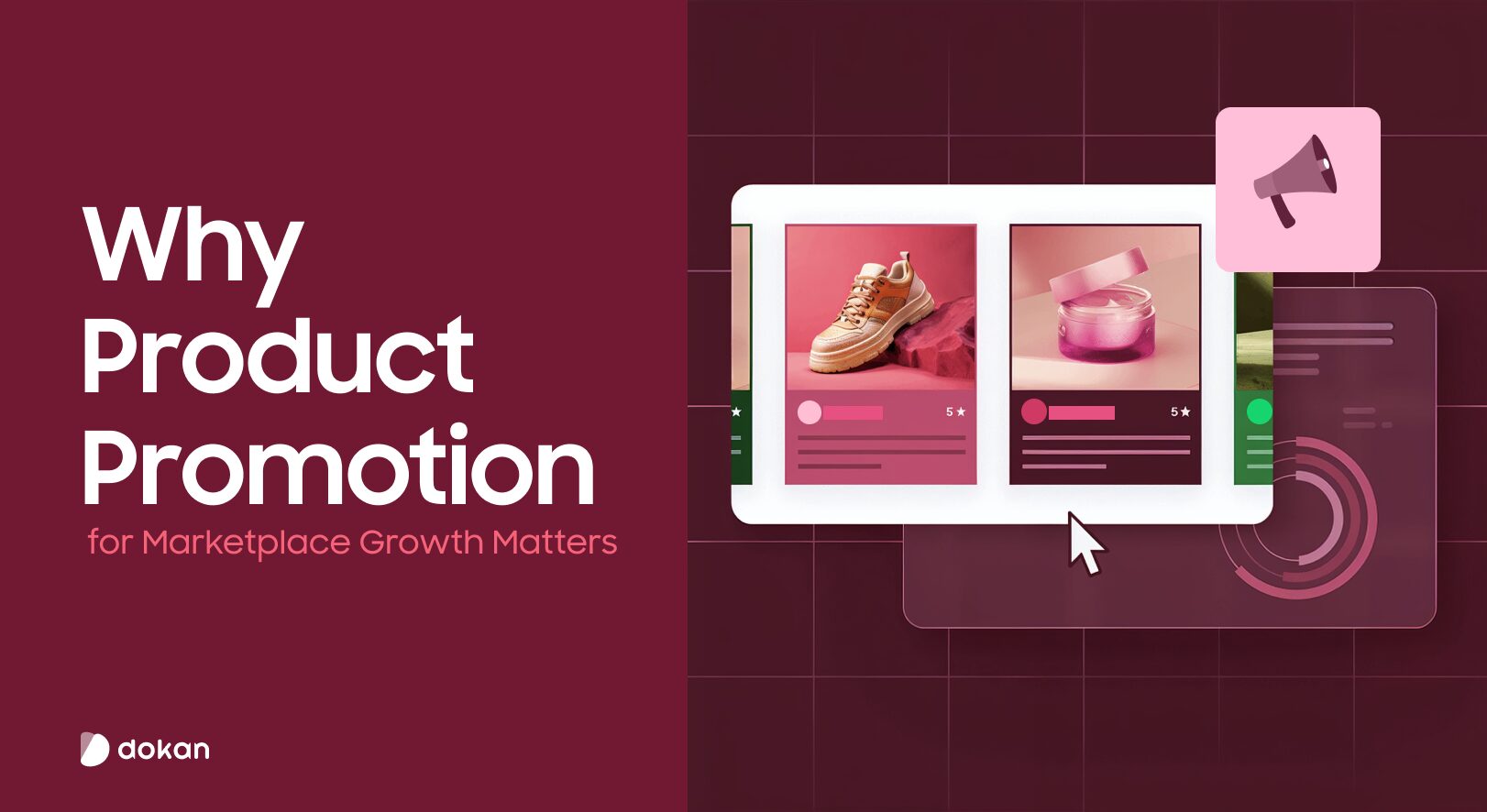


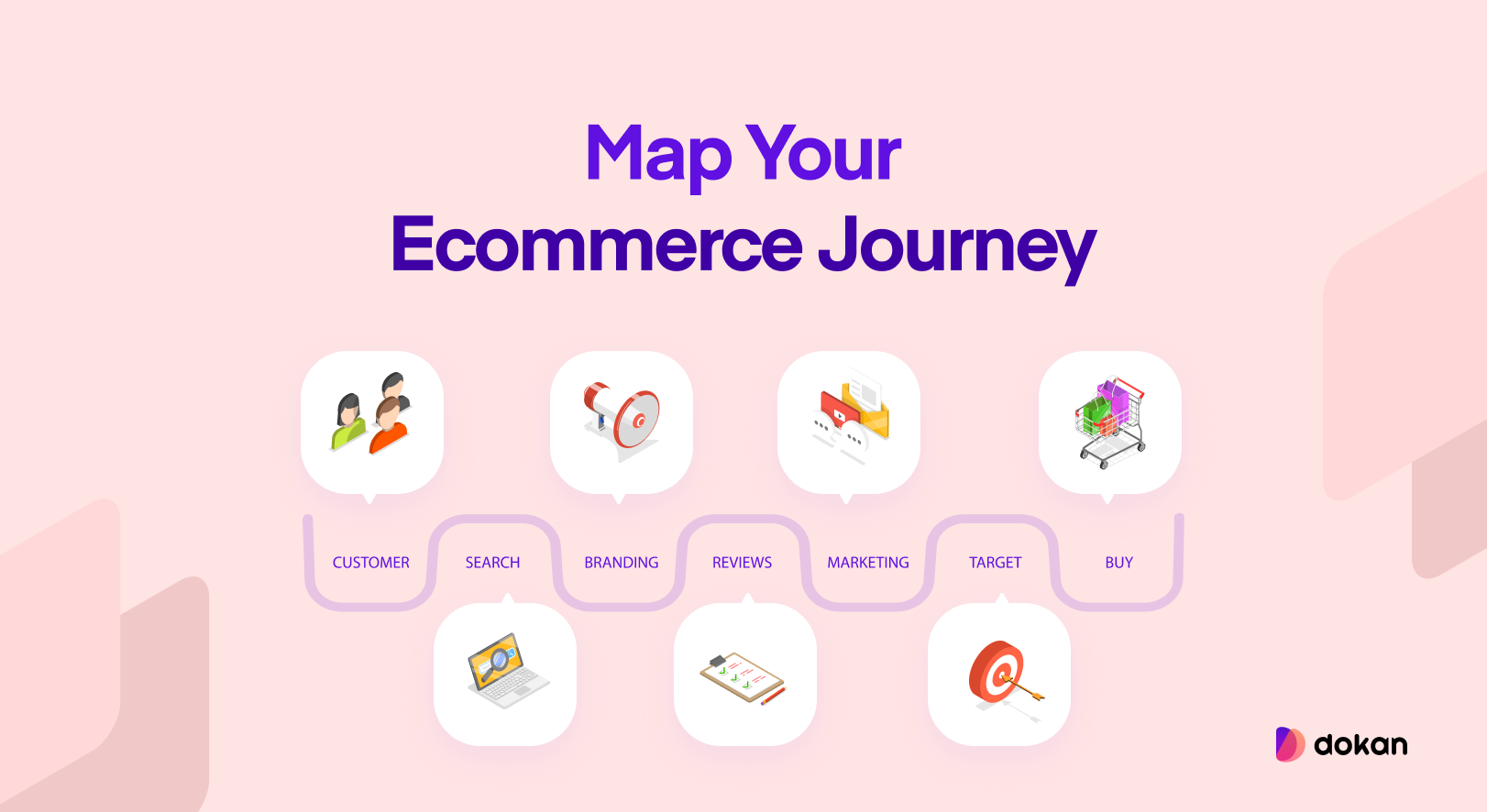

Leave a Reply